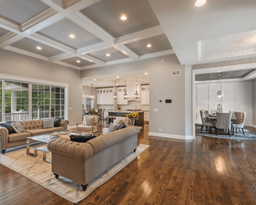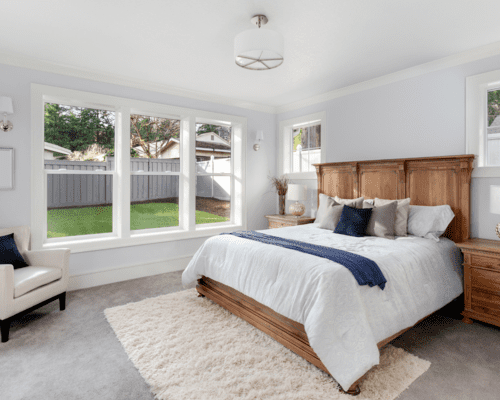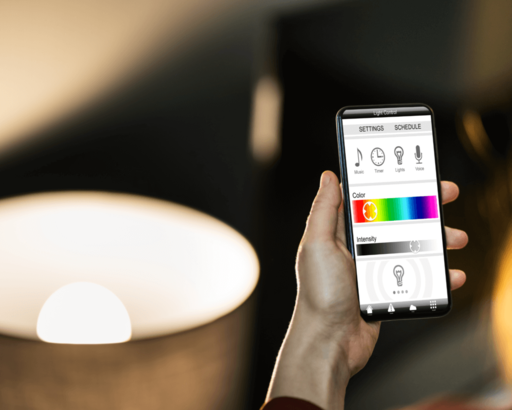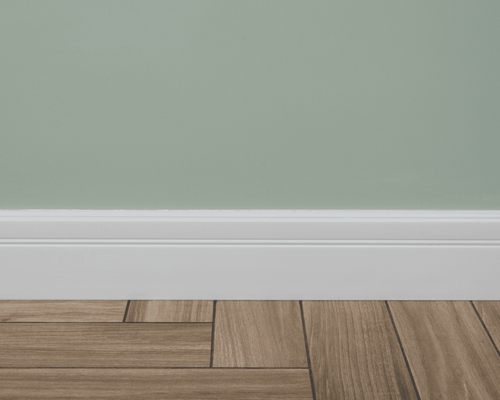According to data from the Census Bureau, CDC and Pew Research Center, senior citizens represent an ever-growing share of our population. Ten years ago, there were only 40.3 million seniors in the US. As of 2019, there were more than 54 million, representing about 16.5% of the US population. This is twice the share recorded in 1950, when residents over the age of 65 made up only 8%. The number of Americans with disabilities is also increasing. Today, more than a quarter of Americans (26%) live with one or more disabilities. While mobility, cognition and independent living disabilities affect young and middle-aged Americans as well, they are most common amongst seniors. As the US population ages, many of us wonder how best to support our seniors. In 2018, 78% of American adults aged fifty or older said they wished to age in place. Three years and one global pandemic later, that number has risen dramatically. When surveyed earlier this year by the AP-NORC Center for Public Affairs Research, 88% said they prefer to remain in their own homes. However, independent living in traditional homes can be a challenge — especially for seniors with disabilities and those without family nearby. According to the CDC, one in six American seniors are childless. Thankfully, there are a number of ways to support seniors aging in place through universal design. Below, we outline twelve home improvements for aging in place.
How to Remodel Your Home So You Can Age in Place
#1 Convert to an Open Floor Plan
 Converting your home’s layout to an open floor plan is one of the first steps to enhancing accessibility for seniors. Fewer obstructions improve mobility amongst seniors with vision impairment, those who have difficulty walking and those who use wheelchairs or walkers. Reducing the number of interior walls also helps more light travel throughout the home, enhancing visibility and protecting seniors from falls or other accidents.
Converting your home’s layout to an open floor plan is one of the first steps to enhancing accessibility for seniors. Fewer obstructions improve mobility amongst seniors with vision impairment, those who have difficulty walking and those who use wheelchairs or walkers. Reducing the number of interior walls also helps more light travel throughout the home, enhancing visibility and protecting seniors from falls or other accidents.
#2 Increase Stair Depth
According to recent research from the Toronto Rehabilitation Institute in Canada, increasing stair depth can also protect seniors from falls. While researchers recommend a minimum 8.25 inch tread depth, the depth of steps along some residential stairways is as little as 7.5 inches. Altering the tread depth of short steps to at least match the length of one’s foot could reduce a significant number of falls. However, researchers typically recommend a tread depth of 11 inches for best results.
#3 Widen Doorways and Hallways
Most residential doorways are not wide enough to accommodate a wheelchair, walker or other mobility assistance device. Public buildings must widen hallways and doors to at least 32 inches to comply with the Americans with Disabilities Act (ADA) accessibility standard. The interior doors and hallways of older homes, however, rarely meet this minimum. Senior homeowners can work with a team of experienced remodelers to expand their doorways and hallways if they require a wheelchair or other assistance.
#4 Add a First Floor Master Suite
 First level master suites prevent seniors from walking up and down stairs to use the restroom or prepare for sleep. To accommodate this need, homeowners can either downsize to a single-story home or convert the first floor of their current home. Downsizing might be the right choice for some. However, it could also eliminate space for a live-in caregiver who may be required further down the road.
First level master suites prevent seniors from walking up and down stairs to use the restroom or prepare for sleep. To accommodate this need, homeowners can either downsize to a single-story home or convert the first floor of their current home. Downsizing might be the right choice for some. However, it could also eliminate space for a live-in caregiver who may be required further down the road.
#5 Replace Flooring According to Needs
Advocates typically recommend homeowners swap out certain types of flooring for those that are soft, slip-resistant and well-suited to wheelchairs or walkers. The right type of flooring differs based on the individual homeowner’s needs. In an article for SF Gate, Chris Deziel recommends ADA compliant hardwoods with a “high Janka rating” for wheelchair users. According to Deziel, these types of hardwoods “resist the bumps and grinds of regular wheelchair traffic better.” While ceramic tiles might also work well for wheelchair users, they can become slippery. To avoid this, homeowners can shop ADA compliant, anti-slip tiles and other flooring, such as durable luxury vinyl plank (LVP).
#6 Update Lights, Locks and Window Treatments with Smart Home Tech
 From security cameras to smart light switches, there are dozens of home tech options available to support seniors aging in place. As such, seniors should consider integrating some of these devices into their homes. We recommend updating locks, lights, window treatments and appliances to include smart home tech. The New York Times recently released this comprehensive list of gizmos and gadgets that can help seniors stay in their homes longer. Best of all, many listed in this NYT article are eligible for AARP discounts.
From security cameras to smart light switches, there are dozens of home tech options available to support seniors aging in place. As such, seniors should consider integrating some of these devices into their homes. We recommend updating locks, lights, window treatments and appliances to include smart home tech. The New York Times recently released this comprehensive list of gizmos and gadgets that can help seniors stay in their homes longer. Best of all, many listed in this NYT article are eligible for AARP discounts.
#7 Install a Walk-In Shower
The majority of falls at home (up to 80%) occur in the bathroom where floors are slippery and supports are few. A 2014 study found that “falls in the bathroom were almost 2.5 times more likely to result in injury” than in other rooms. Because of this, designers often recommend homeowners eliminate tubs, which can be difficult to climb in and out of. They suggest installing walk-in showers with benches, treads and grab bars. Seniors might also consider mounting grab bars by the toilets, as 14% of injuries occur there.
#8 Paint Trim, Stairs and Doorways in Contrasting Colors
 Both color and depth perception decline with age, affecting as many as half of all American seniors. Those who wear multifocal lens glasses are even more likely to struggle with proper depth perception. Something as basic as painting a door frame a different color can help people cope with vision impairment. This is because color contrast can help determine where things should be located. As such, designers suggest painting trim, doorways, stairs and the edges of counters in contrasting colors.
Both color and depth perception decline with age, affecting as many as half of all American seniors. Those who wear multifocal lens glasses are even more likely to struggle with proper depth perception. Something as basic as painting a door frame a different color can help people cope with vision impairment. This is because color contrast can help determine where things should be located. As such, designers suggest painting trim, doorways, stairs and the edges of counters in contrasting colors.
#9 Group Appliances Together in the Kitchen
Next, homeowners should consider grouping appliances together in the kitchen to avoid carrying heavy pots and pans from one end to the other. If possible, seniors should place their stove, oven and sink close to each other.
#10 Remove Upper Cabinets
Throughout the kitchen, seniors should try to limit mounted fixtures that are difficult to reach. This applies to everything from countertops and appliances to cabinets and windows. In her article “Everything You Should Know About Designing a Home for Aging in Place“ for Architectural Digest, Alexandra Kalita elaborates. She notes those aging in place should not “install cabinets over the stove.” This is because “leaning over a hot surface can pose a hazard, particularly when balance is impaired.” Seniors aging in place might also consider swapping out lower cabinets for “drawers under their countertops” as a pulling motion is easier.
#11 Eliminate Thresholds Wherever Possible
Next, homeowners should eliminate thresholds wherever possible by leveling sunken living rooms, single steps and half floors. Smaller sets of steps can be more dangerous than full staircases because they are not as recognizable for those with limited depth perception. The right remodeling firm can help seniors fill in sunken spaces and level off any dangerous steps.
#12 Build an Addition or ADU for a Caregiver
Lastly, seniors who anticipate needing professional help or help from family members in the future might consider building an addition or constructing an ADU. This can be more expensive than most of the improvements listed above. However, adding extra living space for a caregiver can save time, money and peace of mind in the long run. A practiced designer can help each senior homeowner determine whether an addition or an accessory dwelling unit is the right choice.
Remodeling Your Home to Age in Place with VanderBeken Remodel
 At VanderBeken Remodel, we have over 40 years of experience in the construction industry, specializing in the types of improvements mentioned above. Our team, including Certified Aging-in-Place Specialists Ron and Jennifer VanderBeken, is here to guide you through renovations that will greatly benefit you for years to come.
At VanderBeken Remodel, we have over 40 years of experience in the construction industry, specializing in the types of improvements mentioned above. Our team, including Certified Aging-in-Place Specialists Ron and Jennifer VanderBeken, is here to guide you through renovations that will greatly benefit you for years to come.
Located in Snohomish County, Washington, VanderBeken Remodel has received numerous awards for our outstanding design and service, including the Rex/T-Rex Remodeling Excellence Award (2020, 2016), the BIAW Excellence in Remodeling Award (2021, 2020, 2019), the national Chrysalis Award (2018), and the Best of Houzz Service Awards. With a focus on bathroom, kitchen, and whole home remodels, VanderBeken Remodel is the perfect choice for those who want to renovate their home for aging in place. Schedule an introductory call with us at your convenience. We are excited to discuss the future with you.

